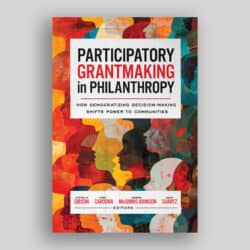by Samuel A. Martin, Published by McClelland & Stewart, Toronto, 1985, 322 pages, $29.95
REVIEWED BY EDWARD J. WAlTZER
Member, The Ontario Bar
The re-examination of the role of governments that will probably occupy much of the public policy debate over the next few years should bring into sharper focus the contribution of another part of society—the non-profit sector. Unlike their neighbours to the south, Canadians who study what Samuel Martin refers to as “humanistic service” find themselves in terrain that is virtually unexplored. In this area of scholarship Professor Martin is a distinguished pioneer. His 1975 book, Financing Humanistic Service*,broke new ground by mapping out the institutions, regulations and public attitudes which have shaped Canada’s voluntary sector. Martin also reached some tentative conclusions, particularly concerning the evolution from private to government responsibility for the financing of “humanistic service” in this country.
Since the publication of Martin’s first book, and often with the benefit of considerable support from the Canadian Centre for Philanthropy, others have begun to explore the field. They find both a paucity of information and immense complexity. The boundaries of philanthropy stretch from the most elementary individual acts of kindness to the very foundations of the nation. The entire sector needs to build an adequate base of information and analysis and to develop ideas which could lead to action.
Because of Martin’s reputation for leadership and scholarship, this second book, An Essential Grace, has been awaited with great anticipation by the growing number of Canadians who have come to share his interest in the philanthropic sector. In many respects, An Essential Grace reviews the subject matter of Financing Humanistic Service, augmenting and updating the considerable information already assembled. But the book moves considerably beyond Financing Humanistic Service,by developing a conceptual framework and postulating, somewhat dogmatically, policy prescriptions. While many, including the author of this review, may disagree with Martin’s conclusions, his credentials and the quality of presentation should be sufficient to stimulate a lively debate.
The book also provides the reader with a broad range of information about philanthropy, including its history, philosophy and demography. At the outset,
* Samuel A. Martin, Financing Humanistic Service, Toronto: McClelland & Stewart, 1975.Martin undertakes an interesting and informative survey of the evolution of humanistic service in civilizations reaching back to ancient China, India, Japan, and classical Greece and, ultimately, focuses on the development of humanistic service in Canada from the first western settlements to the present time. While useful,the scope of the survey is too ambitious and its purpose is not made clear. It certainly does not lend itself to the development of any but the most simplistic conclusions. Similarly, while it is interesting reading and a useful reference, Martin’s thumbnail review of the philosophy of altruism serves more as an annotated bibliography than an analytical framework.
Having swept the reader through centuries of social thought and intellectual development, Martin then sets out to develop a rationale for individual giving patterns, and attempts to identify the motivations for giving at the individual level. This section of the book is probably the most significant analytical effort. Martin moves beyond the typical economist’s model, which tends to characterize giving primarily as a function of economic variables, i.e., discretionary income and the price of giving. As Martin suggests, there can be significant differences in the amount given by individuals with the same discretionary income, even when differing personal traits are taken into account. Here, he begins to develop a conceptual model which includes a range of contextual and personal variables, such as cultural background, social strata, and general attitudes towards philanthropy.
The analysis, which is rich in creative thought, suggests additional work to be done, both in testing Martin’s framework and building on it. For example, Martin does not begin to probe the extraordinarily complex manner in which people choose which non-profit organizations they will support, or the relationship between the decisions about how much to give and to whom. U.S.literature in this area focuses on situational variables (such as perceived personal relevance or the dynamics of being asked to contribute). There is a continuing need for better understanding of the relationship between recipient organizations and their individual donors. Such research would, for example, offer insight into whether and how the existing level of volunteering and giving can be maintained or increased.
It would also be interesting to extend Martin’s preliminary research into the motivation for individual giving to study the motivating factors that inform the donations decisions of foundations and corporations. Contrary to Martin’s view that Canada is emerging as a social welfare state, such institutional but nongovernmental sources of support have tended to be the leaders in areas that distinguish philanthropy from charity, i.e., actions and causes which are designed to change society by ridding it of precisely those ills which charity tries to ameliorate. The long-term support of John Labatt Limited for Martin’s research exemplifies such non-governmental leadership. The instincts which have led so many philanthropists and corporate leaders to this commitment bear careful scrutiny.
While most of this book updates Martin’s 1975 effort, it also surveys the fieldand begins to develop an analytical framework for the study of individual giving and concludes with a series of broad-reaching and controversial policy proposals. Unfortunately, with the exception of one underlying premise, the proposals are not supported by the research and analysis contained elsewhere in the book. That premise is Martin’s conclusion that humanistic service in Canada has been historically an inexorable evolution from personal service to a public welfare system. This conclusion is by no means self-evident. For example, the November 1984 Gallup Poll study of Canadian behaviour and attitudes towards financial support of non-profit organizations indicated that eight out of 10 Canadians name individuals as sources of financial support for philanthropy while only two out of three name government. In support of Martin’s conclusion, however, the Gallup study found that an overwhelming majority said that government should assume the major responsibility.
It is in an effort to stem this increasing shift from private to governmental responsibility that Martin prescribes far-reaching policy initiatives whose principal objective is to reduce government responsibility for funding social services. In the field of higher education, this would be achieved by higher tuition fees coupled with a national endowment fund for students in need. In the health care area premiums would be increased to cover half the costs of health care delivery-more than doubling current health insurance premiums. Universality of social welfare benefits would be eliminated and cultural funding would be restricted to 49 per cent of any cultural institution’s revenues (thereby, in Martin’s view, preventing the state from having the dominant voice in cultural expression).
Martin also advocates an about-face of government policies on multi-culturalism. He urges that Canadian immigrants be encouraged to integrate quickly, rather than to preserve a collage of discrete ethnic extremes. Contrary to much empirical research, Martin feels that such integration will encourage Canadians to expand the scope of their generosity and participation in broadly based community organizations. Finally, Martin advocates tax reform: the encouragement of individual giving by a tax credit for personal donations set at 60 per cent rather than the 50 per cent advocated by NVO (National Voluntary Organizations) and supported by a two-to-one margin in the recent Gallup survey.
What is most remarkable about Martin’s policy manifesto is that it occupies only nine pages out of 322. While some of the ideas may merit further consideration, others (such as those relating to cultural funding and multi-culturalism policies) are, at least in the form presented, somewhat naive. None of the proposals is developed to a point that would encourage or enable others to respond seriously. For example, Martin acknowledges that his proposals relating to health care funding are regressive; the rationale for this policy change is simply his personal opinion that a 50-50 split between state and individual responsibility for the costs of health care delivery “would not be an unreasonable distribution of relative benefits”.Even if one discounts the last few pages of the book An Essential Grace bolsters Martin’s position as the pre-eminent scholar in a nascent field, the study of Canadian philanthropy. Perhaps Martin’s next effort will focus on policy analysis with the same care that he has devoted to the mapping of Canada’s nonprofit sector.
Helping You Helps Me: A Guide For Self-Help Groups
by Karen Hill
Published by The Canadian Council on Social Development, Ottawa: 2nd printing, 1984
REVIEWED BY EDWARD J. WAlTZER
Member, The Ontario Bar
The second printing of this guide, funded by Health and Welfare Canada, is a timely contribution to a movement that appears to have emerged as a significant social and political force in Canada and other western countries.
As noted on the cover, Helping You Helps Me is a practical guide to starting and maintaining a self-help group. By focusing on specific examples, the book progresses logically from defining the scope of self-help groups to covering a range of practical issues relating to their inception and development. Leadership, membership, recruitment, fund raising, organizational structure and community relations are among the areas considered. In each case, the presentation is brief and easy to understand. This is a primer, rather than a textbook or study, although bibliographic references are included for those who might be more analytically inclined. As a practical handbook, Helping You Helps Me deserves widespread distribution but considering the book as a policy guide, i.e., as a reflection of the types of issues of concern to those active in self-help organizations, raises several intriguing questions.
For example, the book devotes a chapter to the relationship between self-help organizations and their related professionals. While not specifically stating that there is a problem, the author clearly focuses on the potential tensions which can arise from the fundamentally different approaches of self-help and professional practice. Indeed, as the guide implies, the rapid growth of self-help challenges (and avoids the constraints of) professional assumptions. Self-help tends to be based on individual experience and common sense, rather than systematic knowledge and scientific methodology. The medium of exchange also differs dramatically-self-help is freely given rather than a commodity to be bought and sold. The author of Helping You Helps Me anticipates these fundamental qualitative differences and suggests that professionals and self-help groups can assist each other by clearly defining the (generally subordinate) role of the professional.Similar tensions are noted in a concluding chapter on “social action”, which touches on the relationships between self-help groups and governments. The collective power which is the objective of self-help has considerable political relevance. Competence developed at the immediate level tends, in time, to be applied to larger political issues. For example, ratepayers’ groups which were originally concerned with neighbourhood issues have taken on a much broader political character. Similarly, the women’s movement has gone well beyond small self-help collectives to become one of the most potent political forces in this country. Groups whose activities may not appear political at the outset develop a capacity for advocacy and become significant political forces precisely because they are community-rooted and oriented to change.
This political development puts self-help organizations on a collision course with the outmoded regulatory framework which governs Canada’s voluntary sector. The administration of the Income Tax Act requires that all resources of a charitable organization be devoted to charitable (as opposed to political) activities. A narrow application of this policy simply does not take into account the interest-group focus of our society. In response to the unfortunate decision in Scarborough Community Legal Services v. The Queen*,[1985] 1 CTC 98, the May 23, 1985 Federal Budget proposes to permit registered charities to engage in political and advocacy activities that are incidental to, and in support of, their charitable goals. (The proposal does not include the support of, or opposition to, political candidates or parties.) While the proposal is an essential stop-gap measure, it is to be hoped that the government will recognize the significance of the sector in more ways than through Income Tax Act amendments and funding for this guide book. The time has come to develop a more responsive and comprehensive public policy framework in support of charitable and voluntary activity in this country.
As is clearly shown in the guide book, both the power of self-help groups engaging in social action and the potential hazards of such activities merit further policy consideration as self-help becomes an increasingly significant force in our society. Self-help organizations rely on bottom-up “politics” and there is a strong underlying resistance to things being done for, or to, such groups, whether by outside professionals or governments. The focus is on independence and self-governance. If this trend is to be encouraged, consideration should be given to the ways in which governments (and professionals) can assist constructively and learn from such organizations, without creating dependency or taking on conflicting roles. The guide book provides a useful starting point.
* Editor’s note: For a further discussion of this case see “Recent Tax Develop
ments”, p. 54.


